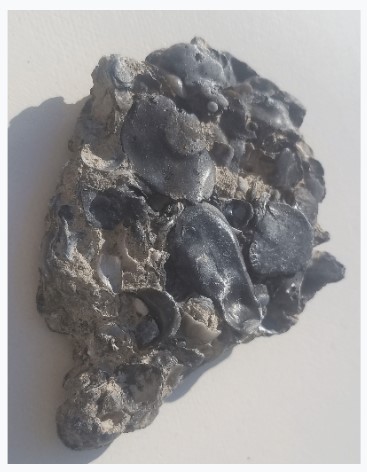Galveston’s beachcombers are busy every day searching for things of beauty like the olive shell or the ever-elusive intact sand dollar, but fulgurites inspire little fanfare despite the intriguing fact that they are the product of one of nature’s most awesome forces—lightning.
Fulgurite is created when lightning strikes sand or more accurately, silica-rich quartz sand. The word fulgurite comes from fulgar, the Latin word for lightning. Galveston’s beaches and dunes are rich hunting grounds for fulgurites.
 A lightning bolt can hold over 100 million volts and register more than 50,000 degrees Fahrenheit, which is hotter than the surface of the sun. Silica sand melts at about 3,200 degrees Fahrenheit.
A lightning bolt can hold over 100 million volts and register more than 50,000 degrees Fahrenheit, which is hotter than the surface of the sun. Silica sand melts at about 3,200 degrees Fahrenheit.
When lightning strikes the sand, the bolt often travels a foot or two below the surface. The extreme heat instantly melts and fuses the sand grains in its path, transforming the sand into fulgurite.
Fulgurite is usually tube-shaped and about a foot long, while surface fulgurite may form as clumps, and sometimes it may have the appearance of a petrified tree branch or root. This is because it acquires the actual form of the lightning bolt as it passes into the ground, forking out in different directions through the sand.
Fulgurites can be found around the world and they come in a variety of shapes and colors depending on the purity of the silica sand and the conditions of the surface at the time of the lightning strike. Locally, a number of fulgurites were collected from east beach near the Palisade Palms Condominium towers immediately after Hurricane Laura made landfall in late August.
These samples had been washed out and revealed by the scouring storm surf. They appear dark colored or black, closely resembling lava rock.
 Some had a bubbling appearance suggesting liquefied sand, which then hardened into a vitrified state. Others were fused with scorched, blackened sea shell pieces.
Some had a bubbling appearance suggesting liquefied sand, which then hardened into a vitrified state. Others were fused with scorched, blackened sea shell pieces.
The samples found on Galveston’s east beach (pictured) are surface fulgurites. It is possible that these lightning strikes occurred at water’s edge where the lightning bolt struck the sand, and the electrical charge then perhaps flowed outward through shallow seawater rather than down into the sand.
Fulgurites may not have the outward beauty of other beach finds, but their beauty lies in the story held within—that of nature’s incredible power.